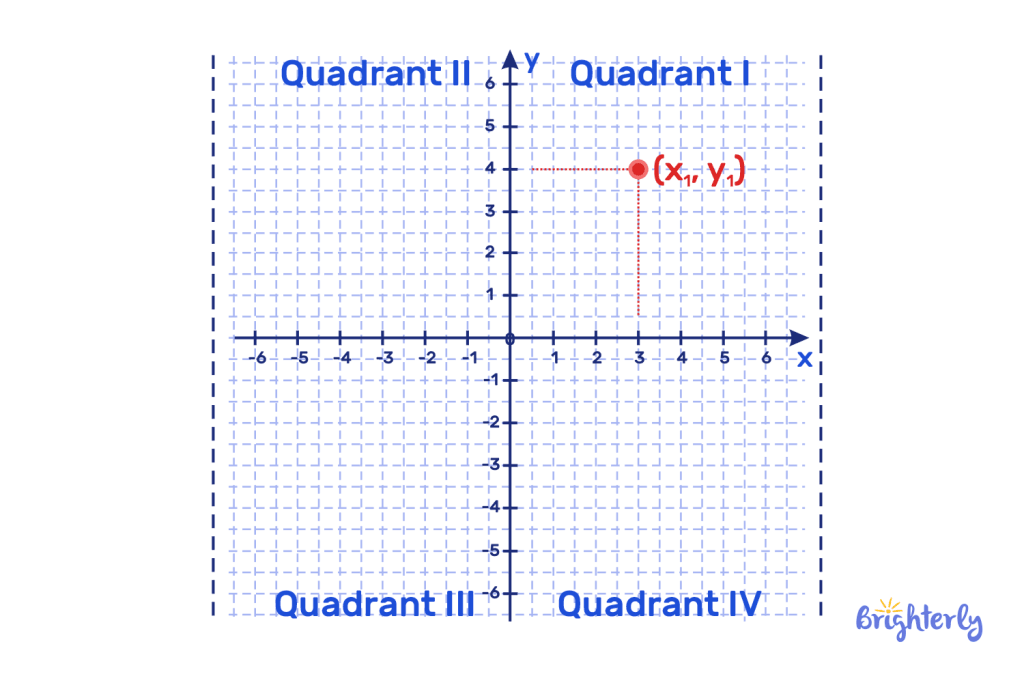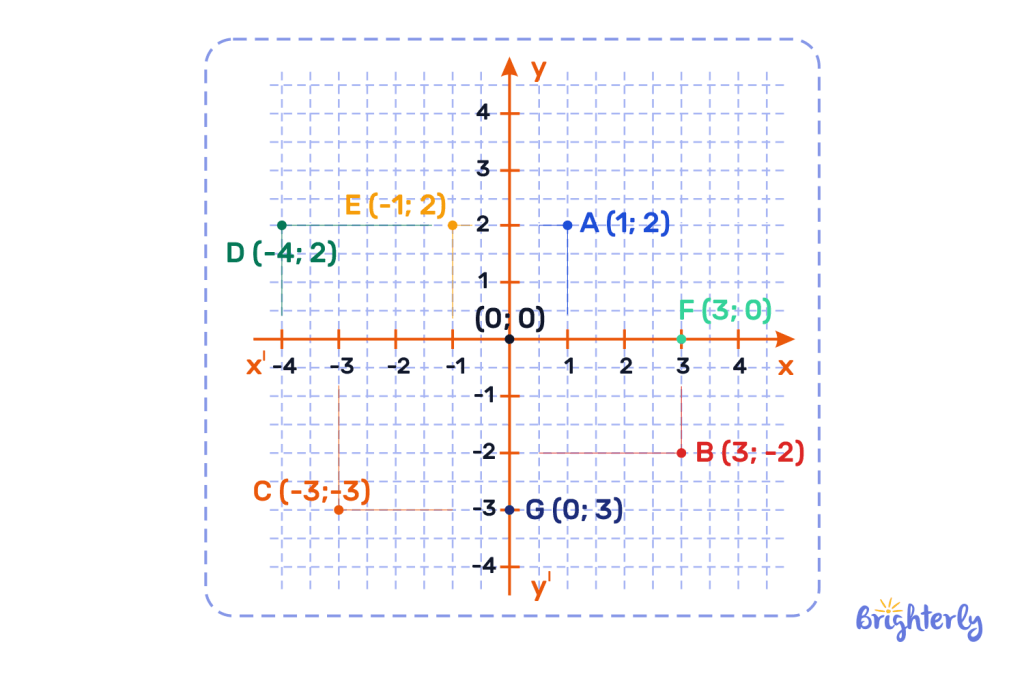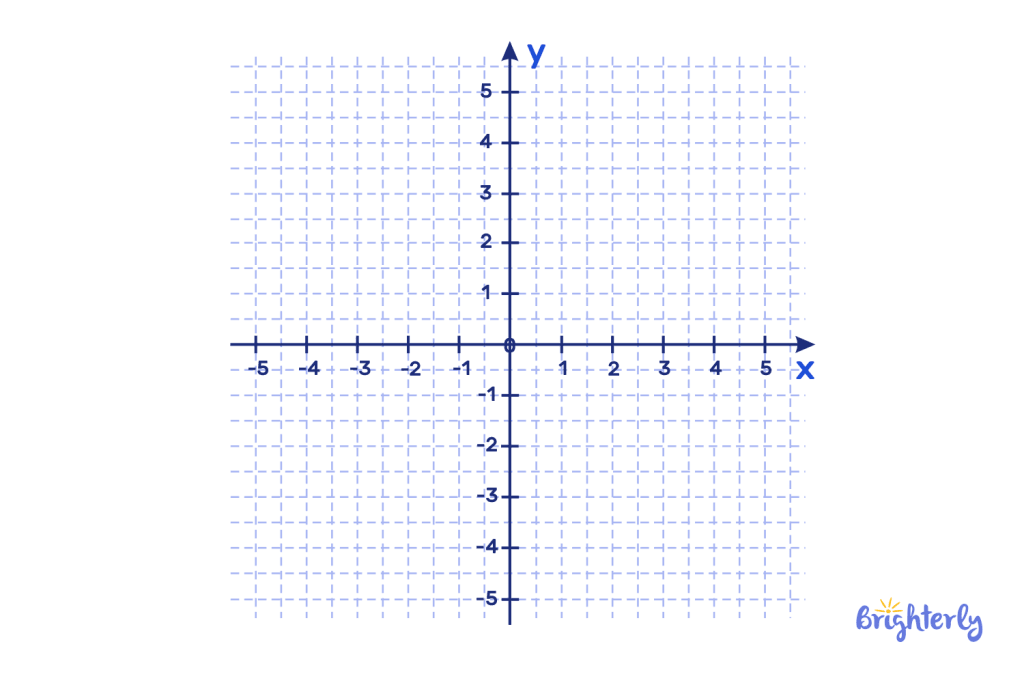Coordinate Plane – Definition with Examples
reviewed by Jo-ann Caballes
Updated on November 5, 2024
Welcome to Brighterly, where we make even the most seemingly difficult math concepts easy to understand and fun to learn.
Today, we’re going to cover the coordinate plane – an essential element of geometry and graphing.
Here, we’ll cover the definition of coordinate plane, how many number lines it has and its individual elements. We’ll also give you some solved math tasks, practice problems and cool worksheets so you can practice your knowledge.
What is a coordinate plane?
A coordinate plane is formed of a 2D (two-dimensional) grid that contains four quadrants and an x-axis and y-axis. The coordinate plane is a key tool when it comes to visualizing locations and graphing data or points, lines and shapes. We cover the full definition of the coordinate plane below.
Coordinate plane definition
The definition of coordinate plane is a diagram that represents numbers as points on a plane. Two lines intersect perpendicularly to create four right angles and thus, four quadrants. The horizontal number line is the x-axis, and the vertical number line is the horizontal axis.
The coordinate plane is used to plot lines, graphs and shapes – and any point that is plotted on a coordinate plane will have a location both on the x-axis and the y-axis.
The horizontal number line in the left quadrants will be represented by negative numbers (aka minus numbers), while the horizontal number line in the right quadrants will be represented by positive numbers (aka positive integers). Conversely, the vertical number line in the lower quadrants will be represented by negative numbers, and the vertical number line in the upper two quadrants will be represented by positive numbers.

Coordinate plane quadrants
It’s important to be able to understand and identify each of your 4 coordinate planes’ quadrants:
- The first quadrant in the top right-hand corner is called the positive coordinates quadrant because all points here are positive (+, +). It is represented by I (the Roman numeral for 1)
- The second quadrant, in the top left-hand corner, has negative x-axis numbers and positive y-axis numbers (-, x). It is represented by II (the Roman numeral for 2)
- The third quadrant, in the bottom left-hand corner, has both negative x-axis and y-axis numbers (-, -) and is represented by III (the Roman numeral for 3)
- The fourth and final quadrant, in the bottom right-hand corner, has positive x-axis numbers and negative y-axis numbers (+, -) and is represented by the IV (the Roman numeral for 4)
Which two dimensions does a coordinate plane have?
The two dimensions a coordinate plane has are length and width. This means it has no thickness or depth.
How many number lines does a coordinate plane have?
A coordinate has two number lines. It has one horizontal number line that stretches from left to right, and one vertical number line that stretches from top to bottom. These number lines are what divide the coordinate plane into four quadrants, as they intersect at the middle point of each line.
How to plot points on a coordinate plane?
It’s super easy to plot your points on your xy coordinate plane. If you’re given a coordinate (or ordering pairs), for example, (3, -4), all you need to do is:
- Move the corresponding number of points along your x-axis first – here, you’d move 3 points along to the right
- Then, move the corresponding number of points up or down your y-axis – here, you’d move 4 points down
- Then, you simply mark your point! You can do this via a dot or with an X – your mark on the coordinate plane describes the location of a point
Coordinate plane: elements
There are some key elements that all coordinate planes will have. The parts of a coordinate plane are:
- Two axes: an x-axis (horizontal) and a y-axis (vertical)
- Four quadrants
- The origin, which is the point at which the two number lines meet
- Number lines, which cover coordinate plane positive and negative numbers
- Coordinates, also known as ordered pairs, which state the location of a point on a graph – they represent the number the point represents on both axes
Coordinate plane example
When it comes to coordinate planes, it’s just as important to show as it is to tell!
Here is an example of a coordinate plane:

You’ll see all of our elements represented on this coordinate plane:
- Two number lines, which are placed vertically and horizontally and intersect at their middle points
- Four quadrants
- Gridlines, which allow us to easily plot our points on our coordinate plane
- You’ll also see some example points mapped out on the coordinate plane and their coordinates (ordered pairs)
The points we plot out on a coordinate plane can be represented by their coordinate pairs – i.e. their corresponding points on both the x-axis and y-axis. In a coordinate pair, the x-axis point is always represented first. For example, (3, 4) would represent a point on the graph that is 3 spaces along and 4 spaces up.
Solved math tasks: examples
Are you ready to start working with coordinate planes in real life? Try out our solved math tasks and draw your own coordinate planes, then check our answers to see if you’ve got them right!
Solved math task 1
On the following coordinate plane, plot the following points:
- (2, 3)
- (-4, 4)
- (-1, -5)
Answer:
Your coordinate plane should be something like this:

Solved math task 2
Identify the ordering pairs (coordinates) of the points on the coordinate plane below:

Answer:
The following coordinates are plotted on this coordinate plane:
|
Solved math task 3
Identify the ordering pairs (coordinates) of the points on the coordinate plane below:

Answer:
The following coordinates are plotted on this coordinate plane:
|
Coordinate plane: practice math problems
Coordinate plane: worksheets
Now that you know the coordinate plane meaning and how to plot your points, are you ready to carry out more work with coordinate planes? Download our fun, free math worksheets to put your knowledge to the test and become a master of working with coordinate planes!
- Coordinate plane vocabulary worksheets
- Geometry worksheets
- Graphing inequalities worksheets
- Graphing linear inequalities worksheets





